4645 people reached – 482 engagements – 18 Likes on Lassi with Lavina FB page – FB Analytics
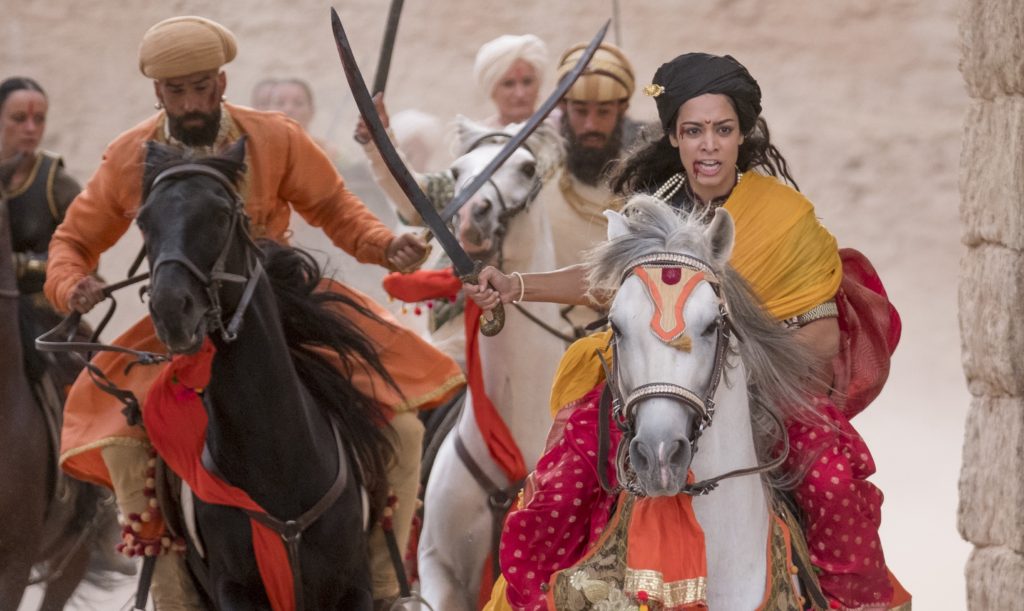
The Warrior Queen of Jhansi is a Global Hero for Our Times
A Mother and Daughter Are Bringing Her Spirit to the World
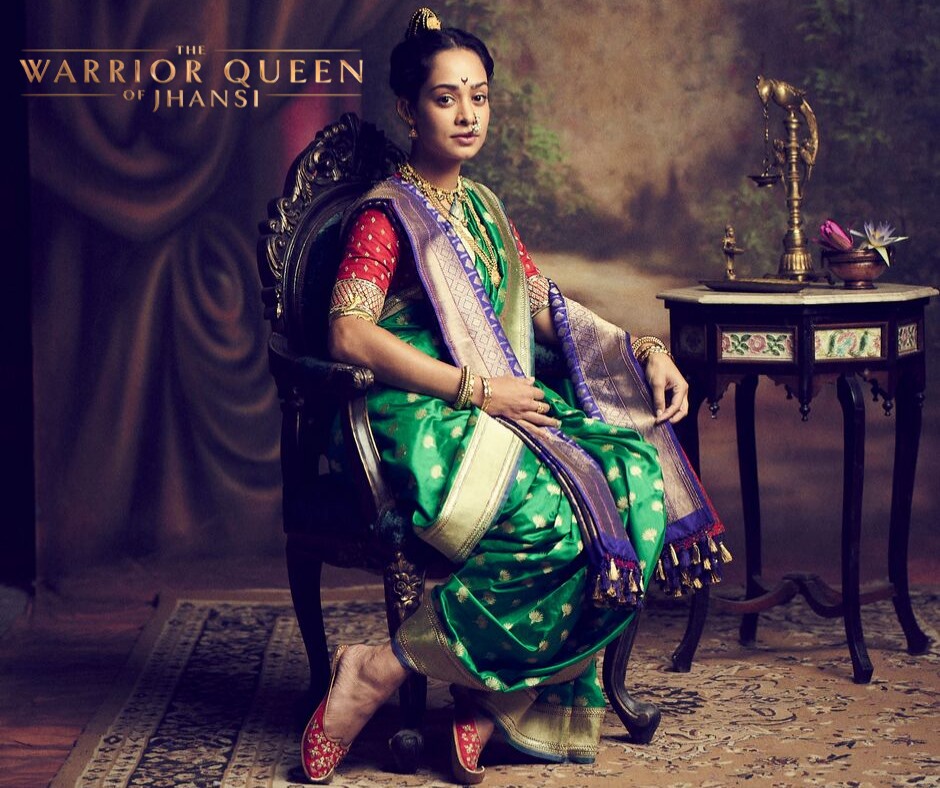
[dropcap]W[/dropcap]hen Swati Bhise was growing up in Mumbai in a family of strong Maharashtrian women, Queen Lakshmibai who took on the mighty British Raj was always upheld as the epitome of valor and strength. Yet whenever Swati was defiant or opinionated, her mother would reprimand her, “Who do you think you are, the Rani of Jhansi?”
Flash forward a few decades and Swati now lives in New York, and has her own American-born daughter Devika whom she encourages to be as free-thinking as the legendary Lakshmibai. Both Indian mother and American daughter are proud of their Maharashtrian roots and the iconic female hero they share – so for them it became a passion, an obsession to retell the story of this firebrand freedom fighter who took on the might of the British Raj and the East India Company in the Mutiny of 1857.
And so was born the new saga of The Warrior Queen of Jhansi, told by two latter-day Maharastrian women, one born in Mumbai, the other in America.
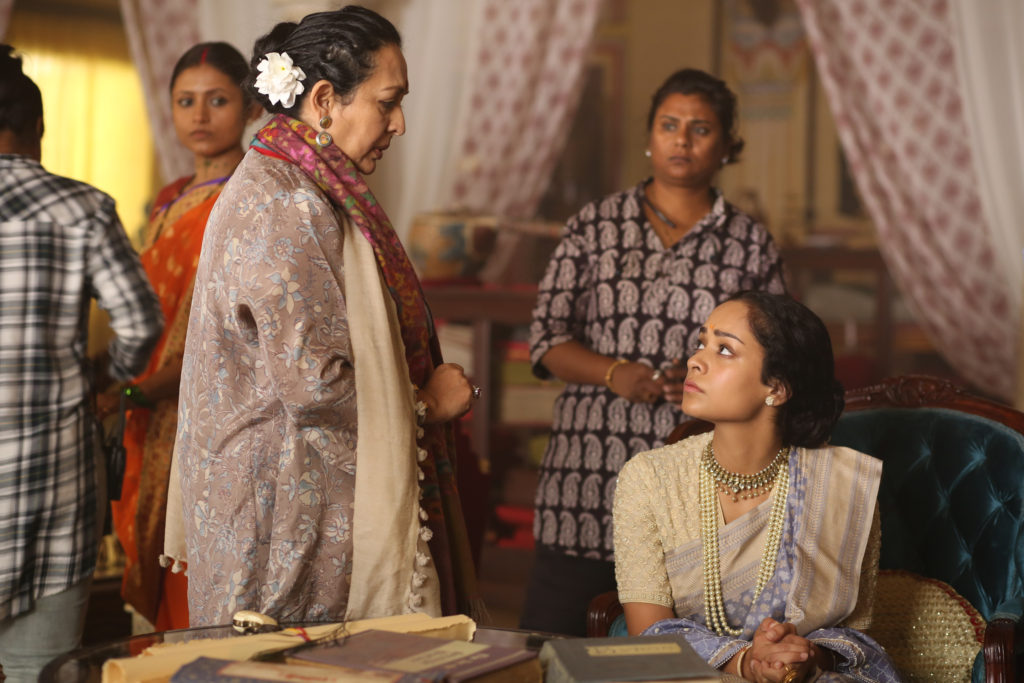
[dropcap]S[/dropcap]wati Bhise has had a distinguished career as bharata natyam dancer and choreographer and has then segued into theater and film production, having already one film as producer under her belt, ‘The Man Who Knew Infinity’
Her daughter Devika, who is an actor, has starred with Jeremy Irons, Dev Patel and Toby Jones in ‘The Man who Knew Infinity’, ‘The Accidental Husband’ and ‘The Rest of Us’ and in a number of theatrical and television features. Devika, who attended John Hopkins University and was awarded the Woodrow Wilson Fellowship, had actually brought the heritage art form of Kudiyattam, to the US. So her interest in bringing the Rani of Jhansi to the West was understandable but the challenges seemed many: which Hollywood producer would make a blockbuster about a brown queen?
Recalls Swati, “We often talked about empowered women, and I said, “Why are we waiting for someone else to do this for us? I’m a history major – I’ve done British history, Indian history – let me just jump into this and write it!”
[dropcap]I[/dropcap]t seemed like an impossible task but the Bhises have made it a fait accompli and are bringing the epic saga of the revolutionary 19th century iconic Indian Queen to cinema halls across the globe.
‘The Warrior Queen of Jhansi’ was produced by Swati Bhise’s Cayenne Pepper Productions and directed by her. The screenplay was written by Swati along with Devika and Olivia Emden. The film stars a stellar British ensemble cast headed by Rupert Everett, Nathaniel Parker, Ben Lamb, Jodhi May, and Derek Jacobi. The Indian talent includes Milind Gunaji, Yatin Karyekar and Ajinkya Deo.
‘The Warrior Queen of Jhansi’ had its world premiere at the Metrograph in New York, and already shown in several film festivals and in India.
The major challenge was to reach out to all sorts of audiences, by producing a crossover film for the current times. Devika with her western training and youth brought in her own flavor to the film which stayed away from Bollywood style song and dance marathons but kept to the true spirit of that period with authenticity a major thread in the retelling.
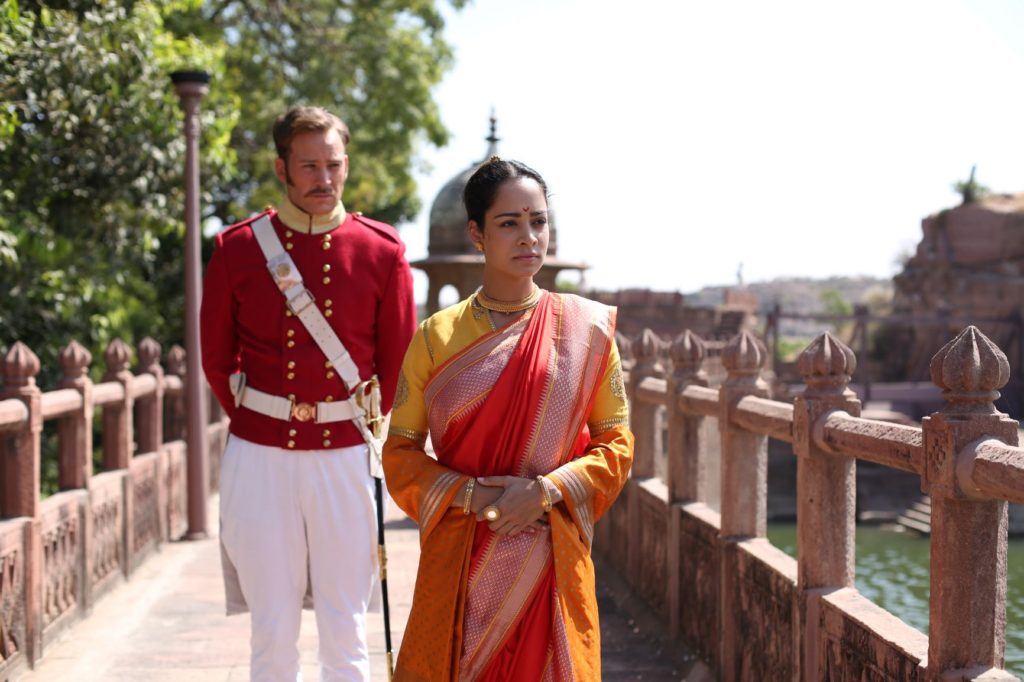
[dropcap]S[/dropcap]o whether it was getting topnotch quality actors or pulling off a major film on a limited budget, Swati knew that as a first-time debut director she would have to figure out how she would jump these hurdles, just as Devika was taking on an entire film on her slim shoulders as the larger than life Queen of Jhansi.
It was here that the feisty spirit of the Rani assisted them both, the never-say-die spirit they had grown up with.
“I used to always say the only way out is through and so I really had to commit myself to working incredibly hard on all the different parts of it, whether it’s the dialects or it’s the English accent, or it’s the action sequences, or just having the stamina to be on set every day for months, in every single scene. So all of those different things made it so that I was terrified really of doing this role and I used that fear to help me become the Rani in that way because she likely may have been terrified, but she couldn’t let anybody see it.
“That’s a very similar thing. As I showed up to set, I had to ride on this horse or jump off a rampart, I could be shaking inside, but from the outside I had to be this strong leading lady and so I definitely used all of that of that fear to make me fearless.”
For Devika it was not only about controlling her fear but actually being thoroughly prepared, having undergone training in martial arts, horseback riding, period dialect and acting in Hindi and Marathi. She also got a crash course in work behind the cameras and final edits when Swati was hospitalized in the final days of the shoot. She says, “Every day I was faced with a new challenge, and every day I used the Rani’s indomitable spirit to navigate these unchartered waters.”
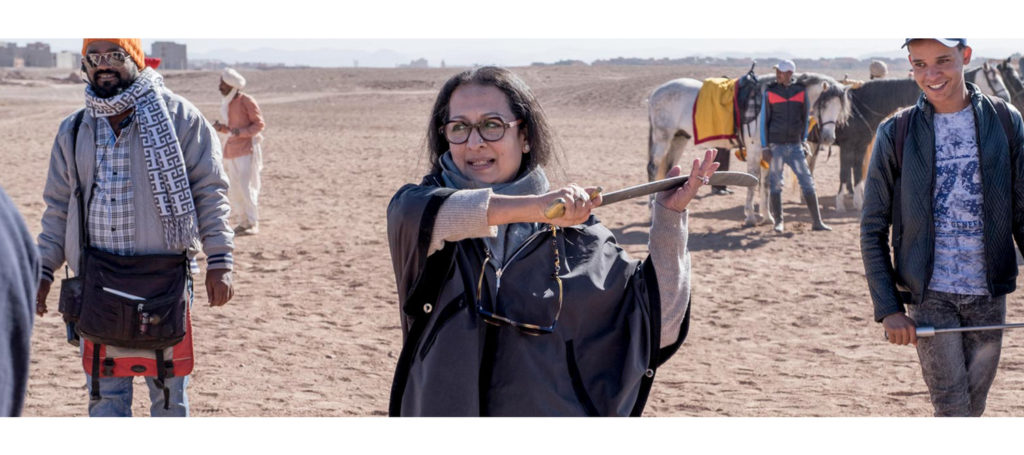
[dropcap]A[/dropcap]s director, Swati definitely had many challenges from getting the stellar cast to sign on to shooting on three continents, and intense battle scenes. Her deep research and love of history paid off in the very authentic costumes and production details. She worked with designer Vidhi Sighania in creating gorgeous costume designs for the Rani, bringing alive the time period through the 9 yard Kota and Benares sarees as well as jackets, dhoti trousers and turbans.
Perhaps, as she points out, the biggest challenge was a very tight schedule of eight weeks to finish the entire film, where the crew worked six days a week, 11 hours a day. Her passion and belief in the project was the moving force and many noted talents read the script and agreed to be a part of the project; she got many wonderful forts and palace locations on a pro bono basis and many big names offered to help her, charmed by her mad passion.
The film has been released in India by PVR in English and dubbed in Marathi . Says Swati, “We’re very, very excited to share it with our fellow countrymen as well as share with them the story of this amazing Warrior Queen, who is very beloved and known to everyone in India. .Many will not have seen the approach that I have taken as a filmmaker which is to bring in the story of the East India Company and its role and not just touch on it but to show five really large characters from the East India Company and have them as part of the story in the interaction with Rani Lakshmibai.”
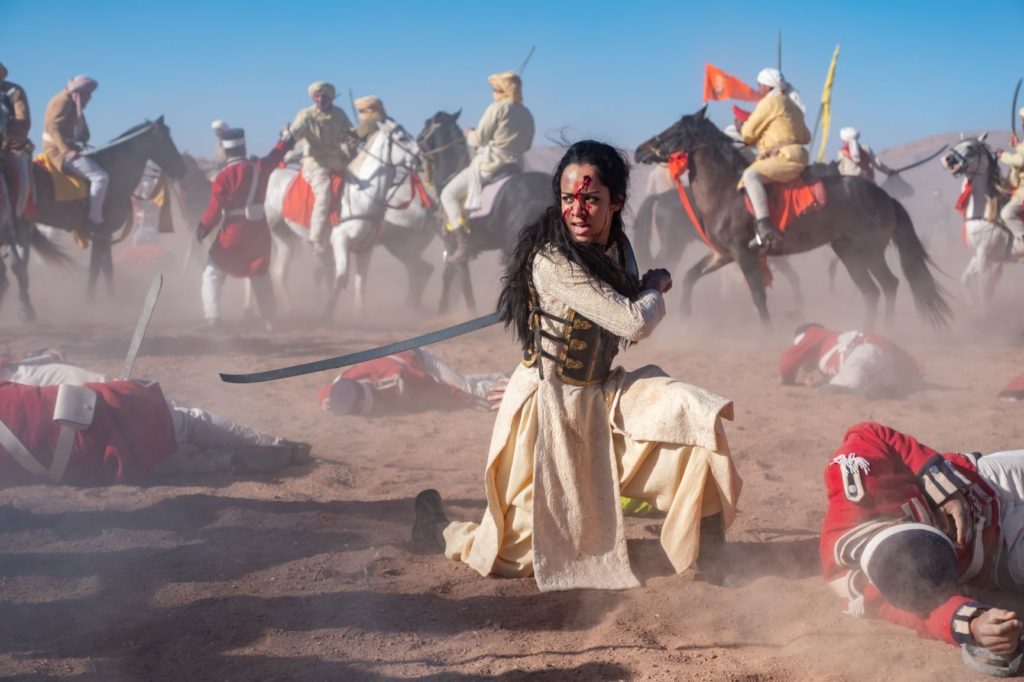
[dropcap]A[/dropcap]sked about the importance of the film to women across the globe, Devika says, “In America, we still haven’t been able to elect a woman president, and India has many examples of female leaders throughout its history – and if you ask people in America, most of them don’t know that. So it was really important to me that to tell a global audience this story of an Indian woman who, like many other Indian women, was a leader, a warrior in charge of men.”
Asked why the Rani is so important to Indian women, Swati Bhise says: “She was only 29 years old when she died. She achieved so much 162 years ago – without any kind of social media. Yet her story has stayed very contemporary and she is an important character, not just for India but for the international community. She shows that a young woman sets her mind on what she can achieve, and that she was a mother, daughter, sister, friend but above all a warrior and a warrior from within, not just a warrior out in the battlefield.
And for me, it resonates, of course, but I wanted to share the story with every woman that maybe if all of us have even 1% of the spirit of this warrior, we could fight many battles of ours and move forward and forge ahead without blaming anyone. And it’s very important that women today understand that we have to make the change ourselves.”
In every city where Swati and Devika Bhise have released ‘Warrior Queen of Jhansi’ they have tied the lives of past women with present day women by presenting ‘The Spirit of the Rani’ award to women of courage who are making a difference in women’s lives. The time has indeed come to celebrate women’s lives and the best people to tell the stories are the women themselves, imbued with the spirit of the Rani of Jhansi.
In Swati Bhise’s Words:
Untold Truths & the Relevance of Jhansi Ki Rani
“My hope as the director and the producer of the film and for the years spent in researching and writing the script is obviously that people can see the passion in what the Rani did with her life, and that they understand that this is not a story about just an Indian woman – but that it crosses every caste, color, religion, creed, gender. It is a story about a very, very strong person – and that each one of us can try to find a little of the strength to be able to handle a lot of very difficult decisions in life – everything is not black and white.
I want the film to be able to reach people in every language, in every country, especially to the west. And it’s not just in Britain, but in America to understand the history of people which is not often told from the point of view of those who have suffered a lot of atrocities, nor is it shared, unless it is a small little mention in some book or a tiny chapter.
I wanted to research and share this story of 1857, and which is so relevant today, including that of the corporate bailout of the East India Company which was the largest corporation in the history of the world. We can always learn from history. So a lot of these stories need to be told so that we can revisit history, relearn from it and maybe not make those same mistakes.”
(This article was first published in The Week.in )
